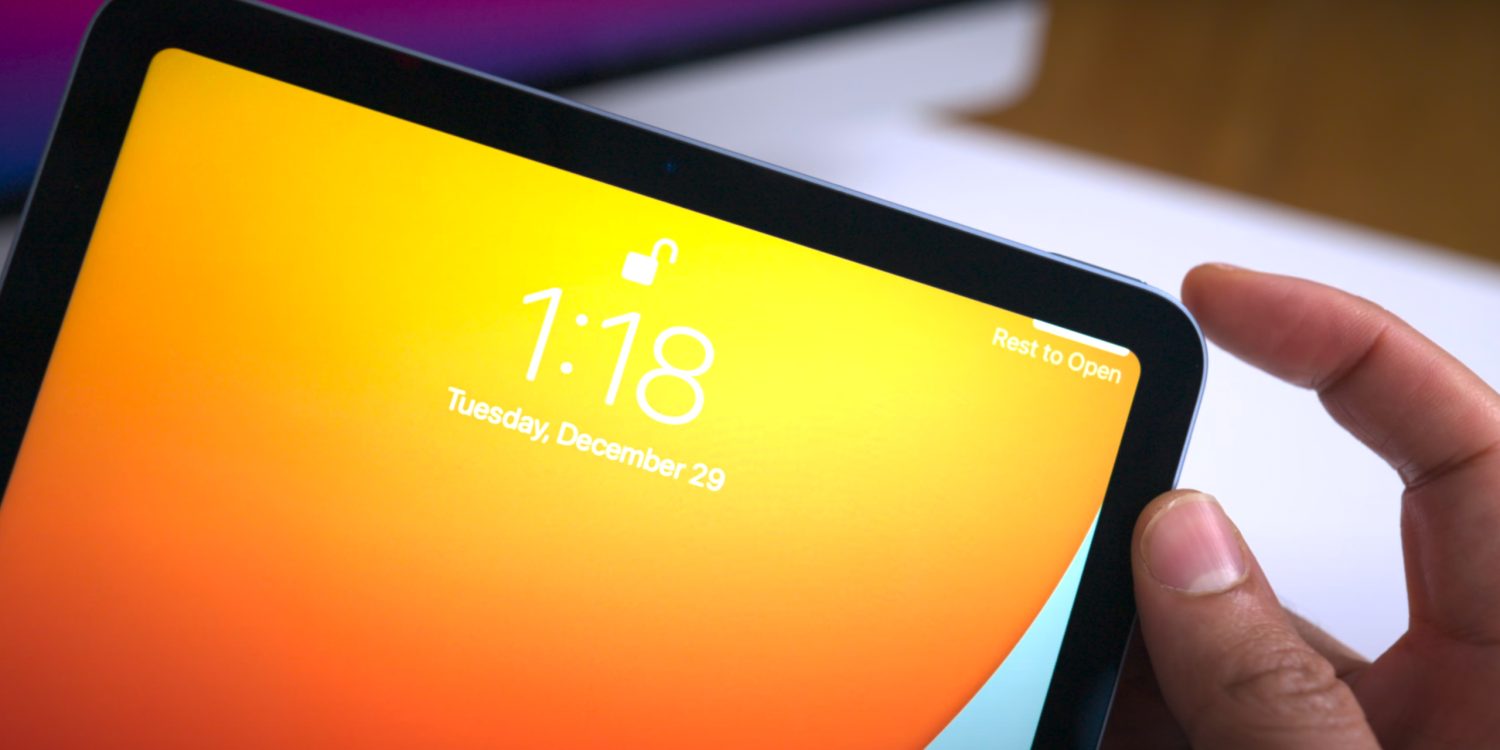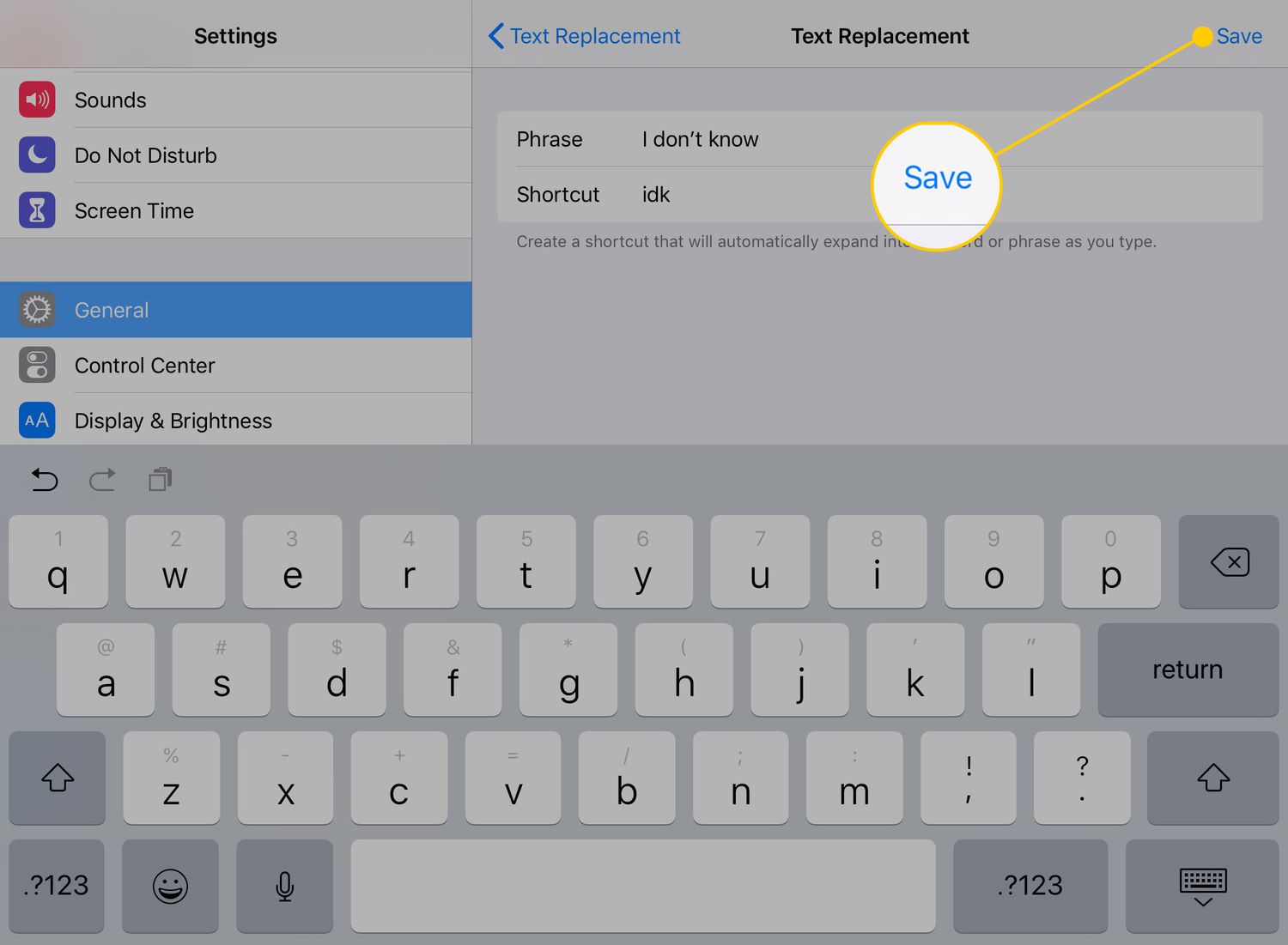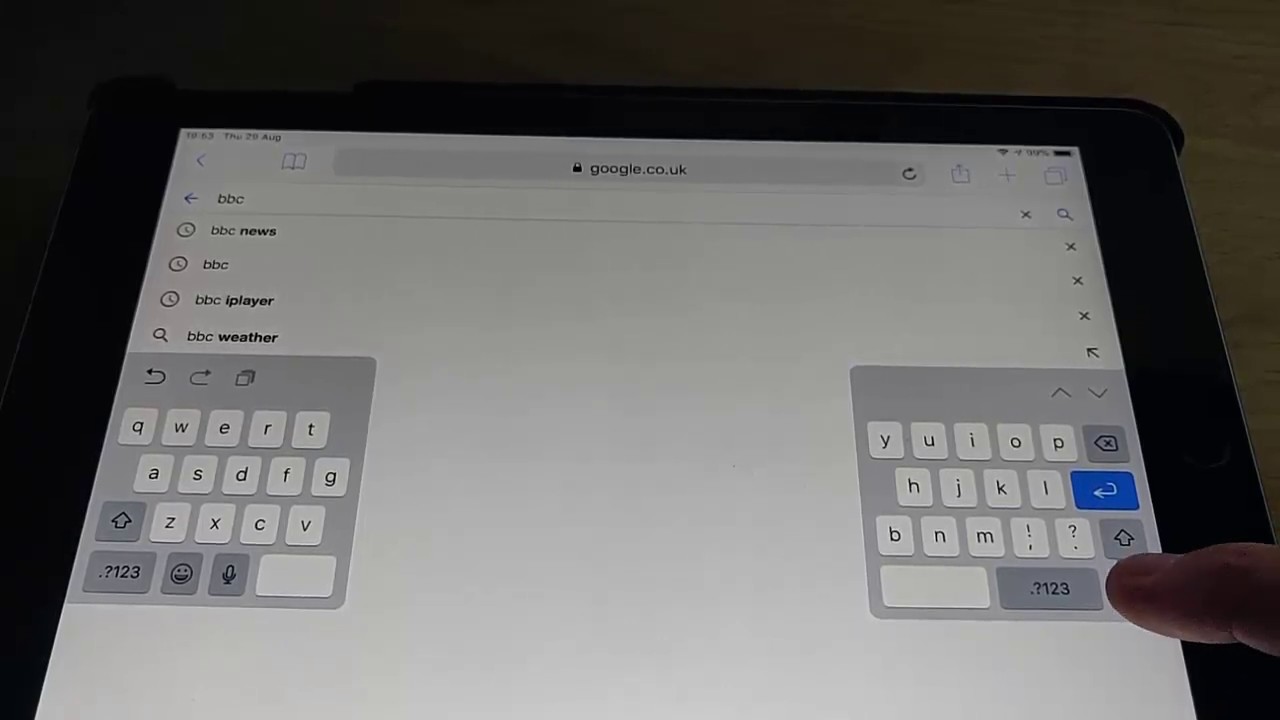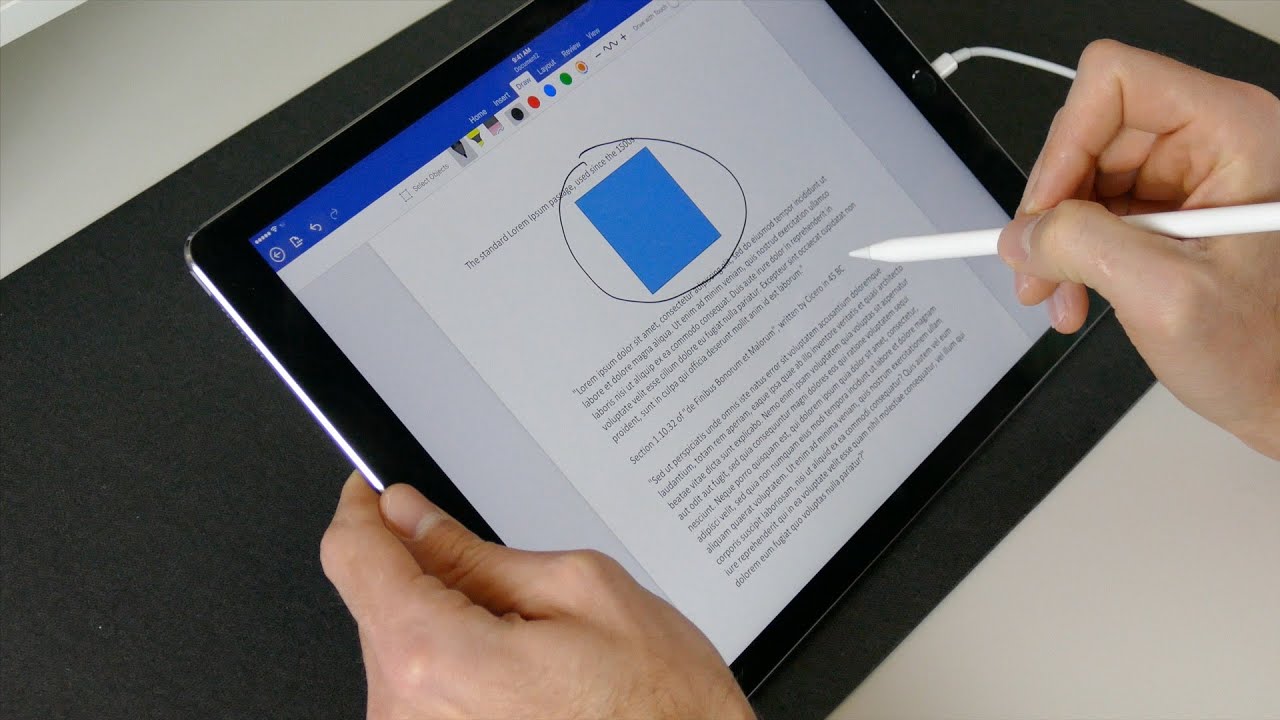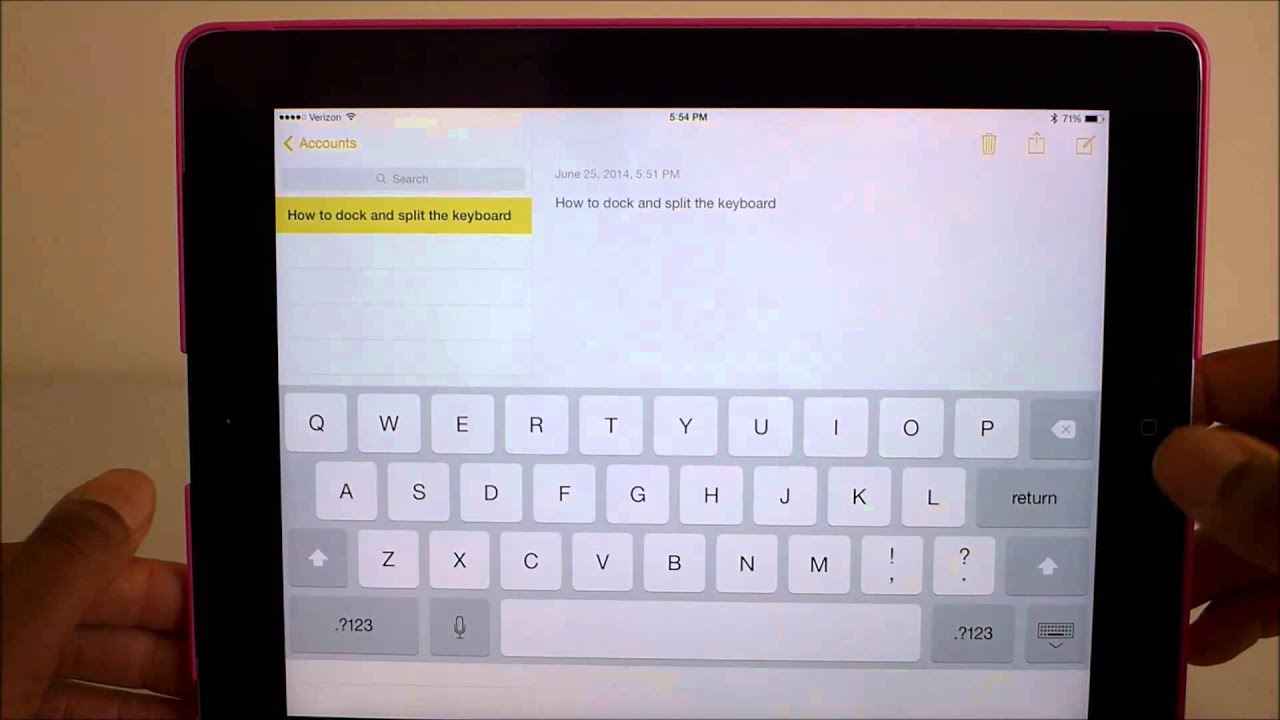Introduction
Welcome to the world of iPad, where you can accomplish countless tasks with just a touch of your fingertips. The iPad is known for its sleek design, impressive performance, and user-friendly interface. However, even the best technology can sometimes encounter glitches, and one of the common issues iPad users face is keyboard problems.
Whether you are struggling with unresponsive keys, incorrect autocorrections, or other keyboard-related problems, don’t worry – we’ve got you covered! In this article, we will explore some troubleshooting steps to help you fix your keyboard on your iPad.
Before we dive into the solutions, it’s important to note that these steps are applicable to most iPad models and iOS versions. However, if you have a specific keyboard-related issue related to a third-party app, it’s recommended to consult the app developer or the Apple support website for assistance.
Now, let’s get started and solve those keyboard woes!
Common Issues with iPad Keyboards
iPad keyboards are typically reliable and efficient, but occasionally they may encounter some issues. Understanding these common problems will help you troubleshoot and find a suitable solution. Here are a few frequently encountered keyboard issues on iPads:
- Unresponsive Keys: One of the frustrating problems is when certain keys on the keyboard become unresponsive, making it difficult to type or input commands.
- Incorrect Autocorrections: Sometimes, the autocorrect feature on the iPad keyboard may become overzealous and replace words or phrases with incorrect suggestions. This can lead to funny, embarrassing, or confusing conversations.
- Keyboard Lag: Another issue you may face is keyboard lag, where there is a delay between typing and the appearance of characters on the screen. This can significantly slow down your typing speed and hinder productivity.
- Missing or Disappearing Keyboard: In some instances, the keyboard may not appear when attempting to type, leaving you unable to input any text or commands.
- Sticky or Stuck Keys: If you notice certain keys on the keyboard feeling sticky or not popping back up after pressing, it becomes challenging to type accurately and efficiently.
Experiencing any of these issues can be frustrating and impact your iPad’s usability. But worry not, as we will explore various troubleshooting steps to help you tackle these problems and get your keyboard functioning properly once again.
Restart Your iPad
When encountering keyboard issues on your iPad, a simple yet effective first step is to restart your device. Restarting can help resolve minor software glitches that may be causing problems with your keyboard.
To restart your iPad, follow these steps:
- Press and hold the Sleep/Wake button (located on the top or side of your device, depending on the model) until the “Slide to power off” slider appears.
- Drag the slider to the right to turn off your iPad.
- Wait for a few seconds until the device completely shuts down.
- Press and hold the Sleep/Wake button again until the Apple logo appears, indicating that your iPad is restarting.
After the restart, test your keyboard to see if the issue is resolved. In many cases, a simple restart can fix temporary glitches and restore your keyboard’s functionality.
If the problem persists, don’t worry, we have more troubleshooting steps to try. Let’s move on to the next solution.
Check for Software Updates
Updating your iPad’s software to the latest version can often fix keyboard-related issues. Apple regularly releases software updates that include bug fixes, improvements, and new features, which can address any underlying software-related problems causing keyboard issues.
Follow these steps to check for software updates on your iPad:
- Open the “Settings” app on your iPad.
- Scroll down and tap on “General”.
- Select “Software Update”.
- If an update is available, tap on “Download and Install”.
- Follow the on-screen instructions to complete the update process.
It’s important to have your iPad connected to a stable and reliable Wi-Fi network during the update process. Additionally, ensure your device has sufficient battery life or is connected to a power source to prevent any interruptions.
After the software update is complete, check if the keyboard issue has been resolved. Sometimes, an outdated operating system can cause compatibility issues with the keyboard software, and updating to the latest version can provide the necessary fixes.
If the problem persists even after updating to the latest software, don’t worry. There are still more troubleshooting steps to try. Let’s move on to the next solution.
Reset Keyboard Settings
If you are still experiencing issues with your iPad keyboard, resetting the keyboard settings can often help resolve any underlying configuration problems.
Here’s how you can reset the keyboard settings on your iPad:
- Open the “Settings” app on your iPad.
- Scroll down and tap on “General”.
- Select “Keyboard”.
- Tap on “Reset Keyboard Dictionary”.
- Enter your passcode if prompted.
- Tap on “Reset Dictionary” to confirm.
This will reset the autocorrect suggestions and dictionary on your iPad, giving you a fresh start with your keyboard. It’s worth noting that this will not delete any of your personal data or files.
Once the keyboard settings have been reset, try using the keyboard again and see if the issue persists. In many cases, a simple reset can fix any software glitches or incorrect settings that may have been causing the problem.
If the problem still persists, don’t worry, there are still additional troubleshooting steps we can try. Let’s move on to the next solution.
Disable and Enable Auto-Capitalization
If you’re facing issues with auto-capitalization on your iPad keyboard, where words are not being capitalized as expected or are being inaccurately capitalized, disabling and then enabling the auto-capitalization feature can help resolve the problem.
Follow these steps to disable and enable auto-capitalization on your iPad:
- Open the “Settings” app on your iPad.
- Scroll down and tap on “General”.
- Select “Keyboard”.
- Toggle off the “Auto-Capitalization” switch to disable the feature.
- Restart your iPad by holding down the Sleep/Wake button until the “Slide to power off” slider appears, then slide it to turn off your device. Once it’s off, press and hold the Sleep/Wake button again until the Apple logo appears to restart your iPad.
- Repeat steps 1-3 to navigate back to the keyboard settings.
- Toggle on the “Auto-Capitalization” switch to enable the feature once again.
Disabling and enabling the auto-capitalization feature can refresh the settings and correct any inconsistencies or glitches that may be causing the issue.
After performing these steps, test the keyboard to see if the auto-capitalization problem has been resolved. If the issue persists, don’t worry. There are still more troubleshooting steps we can try. Let’s move on to the next solution.
Toggle Auto-Correction On and Off
If you’re experiencing issues with auto-correction on your iPad keyboard, where it’s making incorrect or unwanted changes to your typed words, toggling the auto-correction feature on and off can help resolve the problem.
Here’s how you can toggle auto-correction on and off on your iPad:
- Open the “Settings” app on your iPad.
- Scroll down and tap on “General”.
- Select “Keyboard”.
- Toggle off the “Auto-Correction” switch to disable the feature.
- Restart your iPad by holding down the Sleep/Wake button until the “Slide to power off” slider appears, then slide it to turn off your device. Once it’s off, press and hold the Sleep/Wake button again until the Apple logo appears to restart your iPad.
- Repeat steps 1-3 to navigate back to the keyboard settings.
- Toggle on the “Auto-Correction” switch to enable the feature once again.
This action will refresh the auto-correction settings on your iPad, allowing you to start fresh and potentially resolve any issues with incorrect autocorrections.
After toggling the auto-correction feature, test the keyboard again to see if the problem has been resolved. If the issue persists, don’t worry. There are still more troubleshooting steps we can try. Let’s move on to the next solution.
Adjust Keyboard Language and Layout
If you’re experiencing keyboard issues on your iPad, such as incorrect characters appearing or a layout that doesn’t match your desired language or region, adjusting the keyboard language and layout settings can help resolve the problem.
Follow these steps to adjust the keyboard language and layout on your iPad:
- Open the “Settings” app on your iPad.
- Scroll down and tap on “General”.
- Select “Keyboard”.
- Tap on “Keyboards” to view the list of available keyboards.
- To add a new keyboard, tap on “Add New Keyboard” and select the desired language or layout.
- To remove a keyboard, swipe left on the keyboard and tap on “Delete”.
- Arrange the order of the keyboards by tapping on “Edit” and dragging them into the desired order.
By adjusting the keyboard language and layout settings, you can ensure that the characters and layout are aligned with your preferences, facilitating a smoother and more accurate typing experience.
If you’re experiencing issues with a specific layout or language, removing and re-adding the keyboard can refresh the settings and potentially resolve any problems.
Test the keyboard after adjusting the language and layout settings to see if the issue has been resolved. If the problem persists, don’t worry. There are still more troubleshooting steps we can try. Let’s move on to the next solution.
Clean Your iPad and Keyboard
Physical dirt, dust, or debris can sometimes interfere with the functionality of your iPad and keyboard, leading to unresponsive keys or other issues. Cleaning your iPad and keyboard can help remove any potential obstructions and improve performance.
Here are some steps to clean your iPad and keyboard:
- Power off your iPad and disconnect any accessories.
- Use a soft, lint-free cloth slightly dampened with water to gently wipe the screen and outer surfaces of your iPad. Avoid using abrasive materials or excessive moisture.
- For the keyboard, if it can be detached from the iPad, follow the manufacturer’s instructions for cleaning. Typically, a soft, dry cloth or compressed air can be used to remove dust and debris from the keys and crevices.
- For external keyboards or covers, if they are removable, carefully remove them from the iPad and clean them according to the manufacturer’s instructions.
- Allow the iPad and keyboard to dry completely before reattaching or turning them on.
Regular cleaning can help prevent buildup and ensure optimal performance of your iPad and keyboard.
After cleaning, test the keyboard to see if the issue has been resolved. If the problem persists, don’t worry. There are still more troubleshooting steps we can try. Let’s move on to the next solution.
Restore Your iPad to Factory Settings
If you’ve exhausted all other troubleshooting steps and are still experiencing persistent keyboard issues on your iPad, restoring your device to factory settings may be necessary. This process will erase all data and settings on your iPad and reinstall the original operating system.
Before proceeding with a factory reset, it’s crucial to back up your data to prevent permanent data loss. Once you have a backup, you can follow these steps to restore your iPad:
- Open the “Settings” app on your iPad.
- Scroll down and tap on “General”.
- Select “Reset”.
- Tap on “Erase All Content and Settings”.
- Enter your Apple ID and password when prompted.
- Confirm the reset by tapping on “Erase Now”.
- Wait for the device to erase and reset to its factory settings. This process may take a few minutes.
- Once the reset is complete, follow the on-screen instructions to set up your iPad as a new device.
After restoring your iPad to factory settings, the keyboard issue should be resolved. However, keep in mind that this action will delete all data and settings from your device, so it’s crucial to have a backup beforehand.
If the problem still persists even after a factory reset, it may be indicative of a hardware issue. In such cases, it is recommended to contact Apple Support or visit an authorized service center for further assistance.
Conclusion
Keyboard issues on your iPad can be frustrating, but with the troubleshooting steps outlined in this article, you have a good chance of resolving them. We’ve covered various solutions, from simple restarts to adjusting settings and even restoring your device to factory settings. Here’s a recap of the steps we’ve discussed:
- Restart your iPad
- Check for software updates
- Reset keyboard settings
- Disable and enable auto-capitalization
- Toggle auto-correction on and off
- Adjust keyboard language and layout
- Clean your iPad and keyboard
- Restore your iPad to factory settings (as a last resort)
Remember to follow the steps in the order presented and test your keyboard after each solution. If one method doesn’t resolve the issue, move on to the next one. It’s essential to keep your iPad updated with the latest software and maintain good physical cleanliness to ensure optimal performance.
If you’ve tried all the solutions and the keyboard issue still persists, it’s recommended to contact Apple Support or visit an authorized service center for further assistance. They will have the expertise to diagnose and resolve any hardware-related problems.
We hope this article has helped you in fixing your iPad keyboard issues and that you can now enjoy a smooth and hassle-free typing experience once again. Happy typing!







